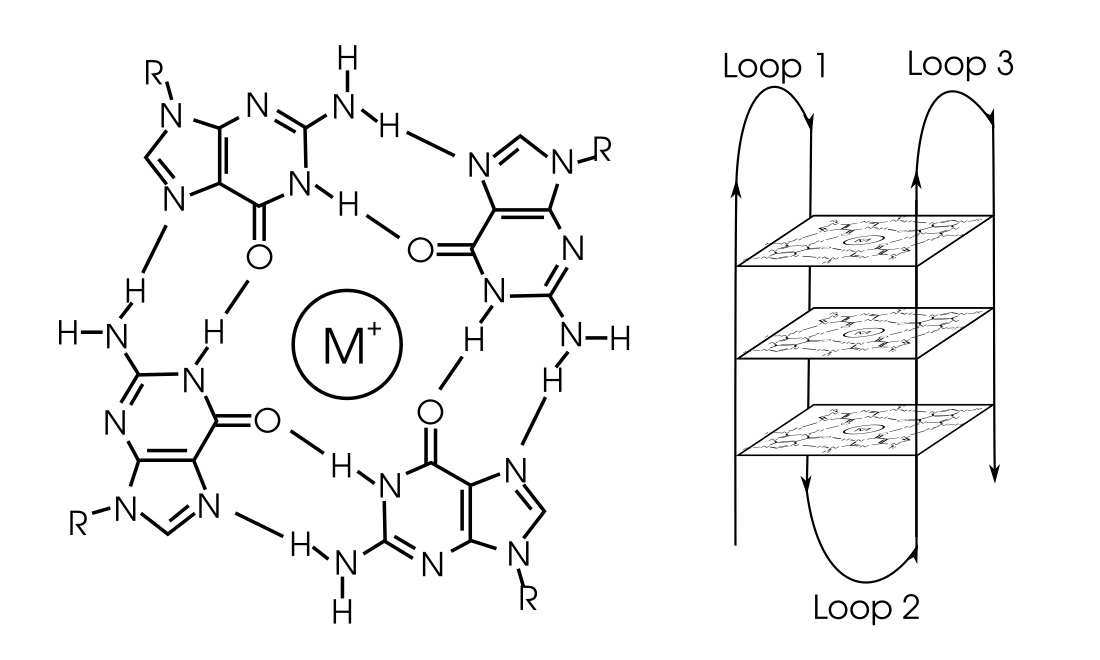Top Qs
Timeline
Chat
Perspective
Guanine tetrad
Structure in molecular biology From Wikipedia, the free encyclopedia
Remove ads
In molecular biology, a guanine tetrad (also known as a G-tetrad or G-quartet) is a structure composed of four guanine bases in a square planar array.[1][2] They most prominently contribute to the structure of G-quadruplexes, where their hydrogen bonding stabilizes the structure.[3][4] Usually, there are at least two guanine tetrads in a G-quadruplex, and they often feature Hoogsteen-style hydrogen bonding.[1]

Right: Three guanine tetrads contributing to the structure of a G-quadruplex
Guanine tetrads are formed by sequences rich in guanine, such as GGGGC.[5] They may also play a role in the dimerization of non-endogenous RNAs to facilitate the replication of some viruses.[5] Guanine tetrads dimerize through their 5' ends since it is more energetically favorable.[6]
They can be stabilized by central cations, such as lithium, sodium, potassium, rubidium, or caesium.[7][8] However, they still form a variety of different structures.[1] Guanine tetrads are not always stable, but the sugar-phosphate backbone of DNA can assist in stability of the guanine tetrads themselves.[1] Guanine tetrads are more stable when stacked, as intermolecular forces between each layers help stabilize them.[9]
Guanine tetrads can also influence recombination, replication, and transcription.[1][2] For instance, guanine tetrads are found in the promoter region of the Myc family of oncogenes.[10] They also function in immunoglobulin class switching and may play a role in the genome of HIV.[11] Guanine tetrads appear frequently in the telomeric regions of DNA.[3]
Remove ads
See also
References
External links
Wikiwand - on
Seamless Wikipedia browsing. On steroids.
Remove ads
